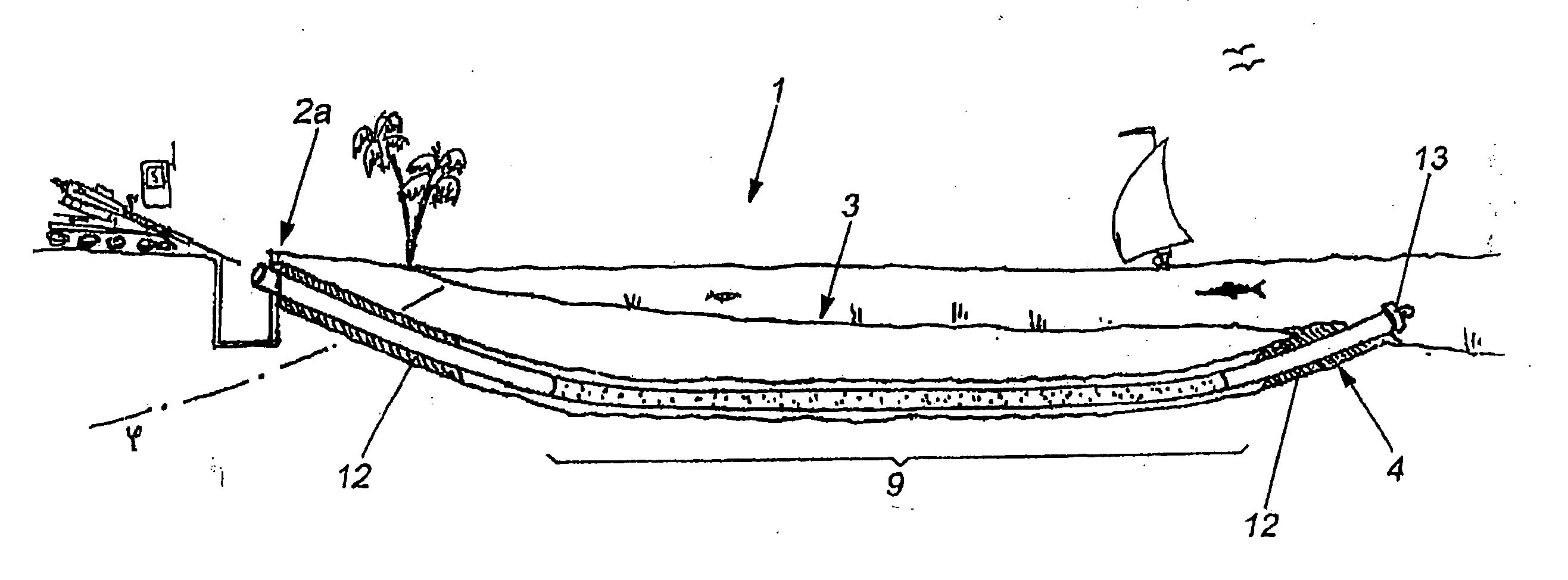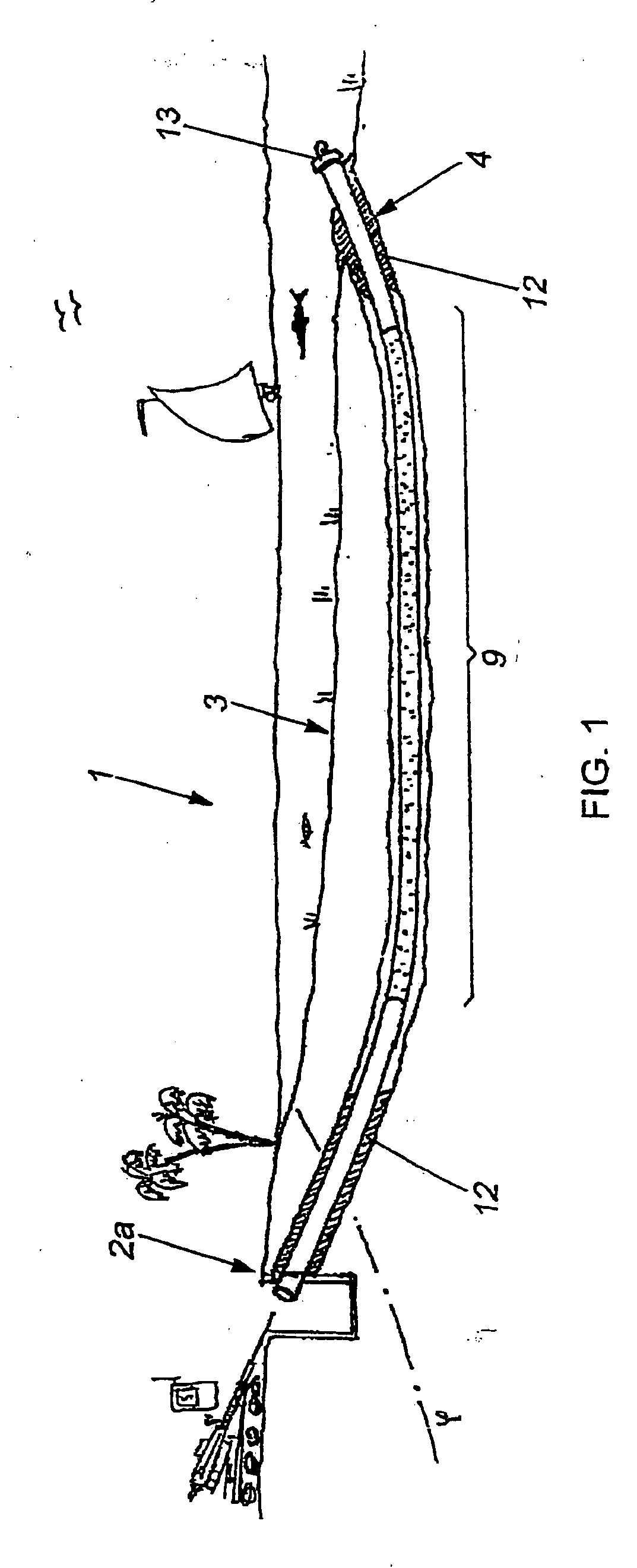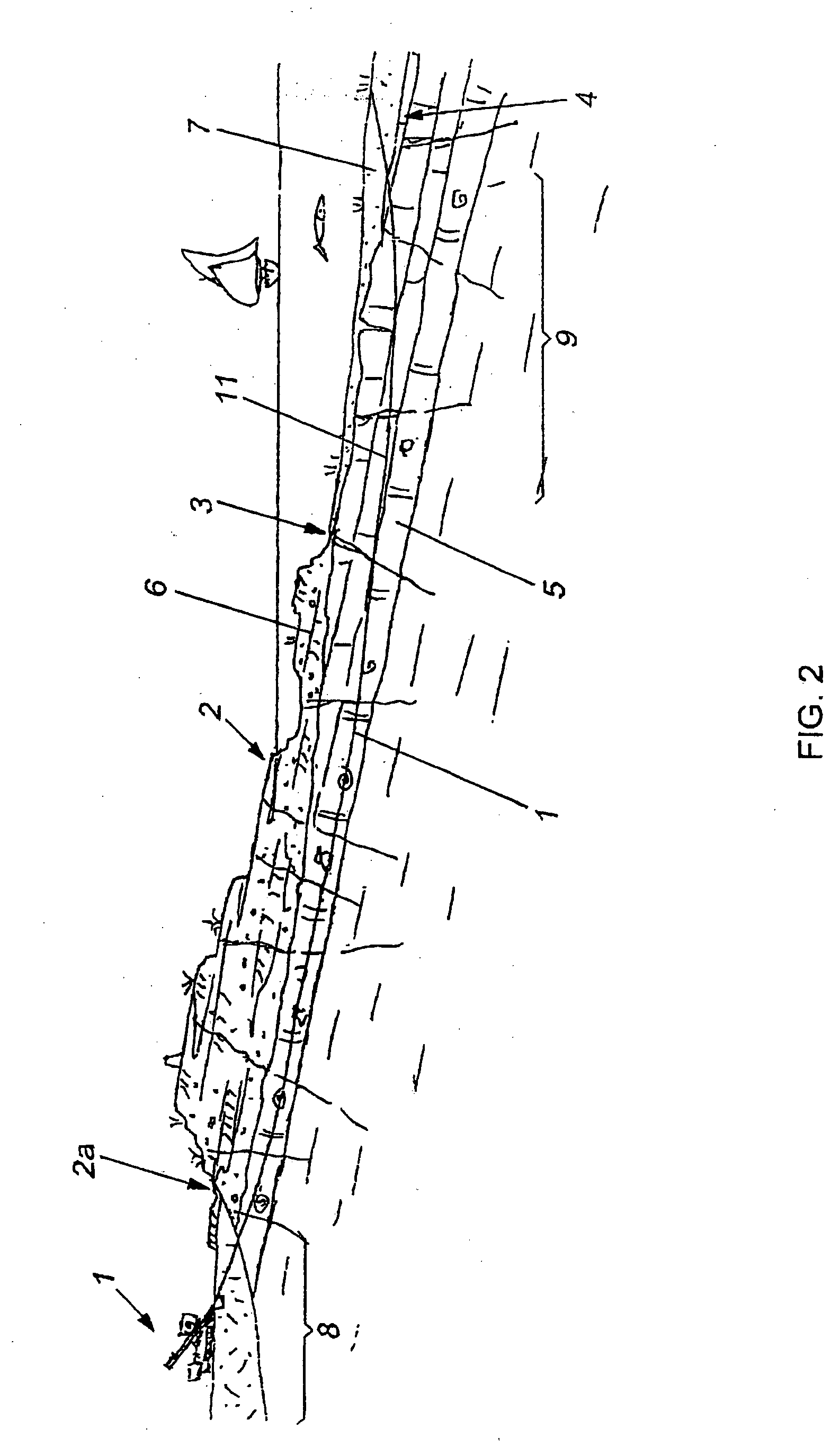Procedure for Installing Horizontal Drains for Uptake of Sea Water
a technology for installing horizontal drains and sea water, which is applied in the direction of surveying, directional drilling, and well accessories, etc., can solve the problems of provoking or accelerating the process, affecting the subsequent process of filtration and treatment, and increasing the cost of the general collection process
- Summary
- Abstract
- Description
- Claims
- Application Information
AI Technical Summary
Benefits of technology
Problems solved by technology
Method used
Image
Examples
Embodiment Construction
[0014] The procedure of the invention comprises, after the appropriate hydrological and geotechnical studies of the viability and site of the productive sections or regions, the guided horizontal drilling (GHD), of one or more boreholes from the land in a zone close to the coastline, and directed towards the sea, passing through zones expected to provide sufficient permeability, both because of porosity and because of fracturing, to ensure at all times the replenishing of the marine aquifer to be exploited, and until reaching the seabed in a final slightly upward section.
[0015] The GHD system allows the drill head to be guided to drill very long holes (more than 600 m) within the strata of the productive aquifer. This technology allows holes to be drilled from the land which come out in the sea without affecting the intermediate section. For the localization of the drill head, magnetic navigation systems are used, with a localization precision of the order of centimeters, allowing ...
PUM
 Login to View More
Login to View More Abstract
Description
Claims
Application Information
 Login to View More
Login to View More - R&D
- Intellectual Property
- Life Sciences
- Materials
- Tech Scout
- Unparalleled Data Quality
- Higher Quality Content
- 60% Fewer Hallucinations
Browse by: Latest US Patents, China's latest patents, Technical Efficacy Thesaurus, Application Domain, Technology Topic, Popular Technical Reports.
© 2025 PatSnap. All rights reserved.Legal|Privacy policy|Modern Slavery Act Transparency Statement|Sitemap|About US| Contact US: help@patsnap.com



